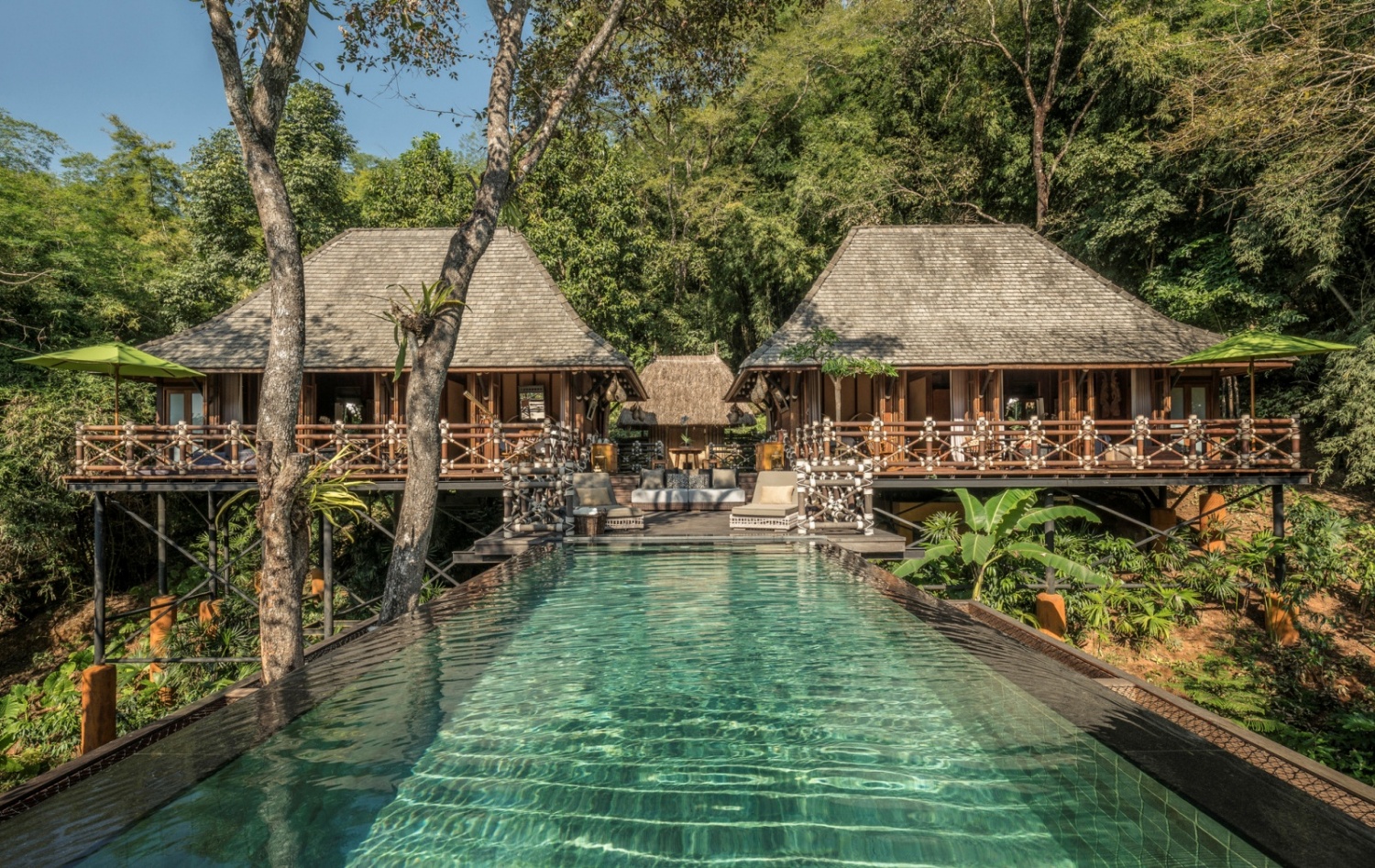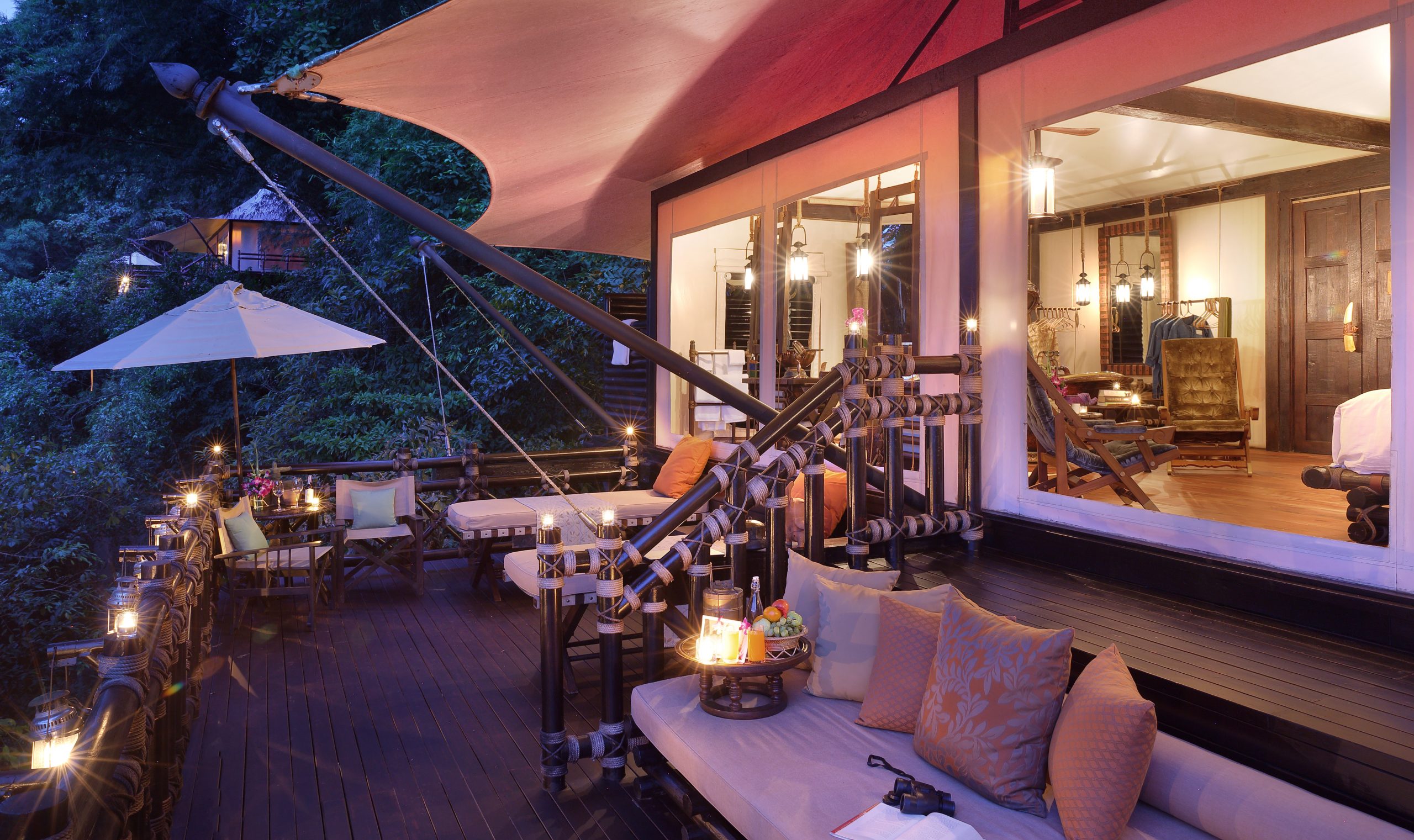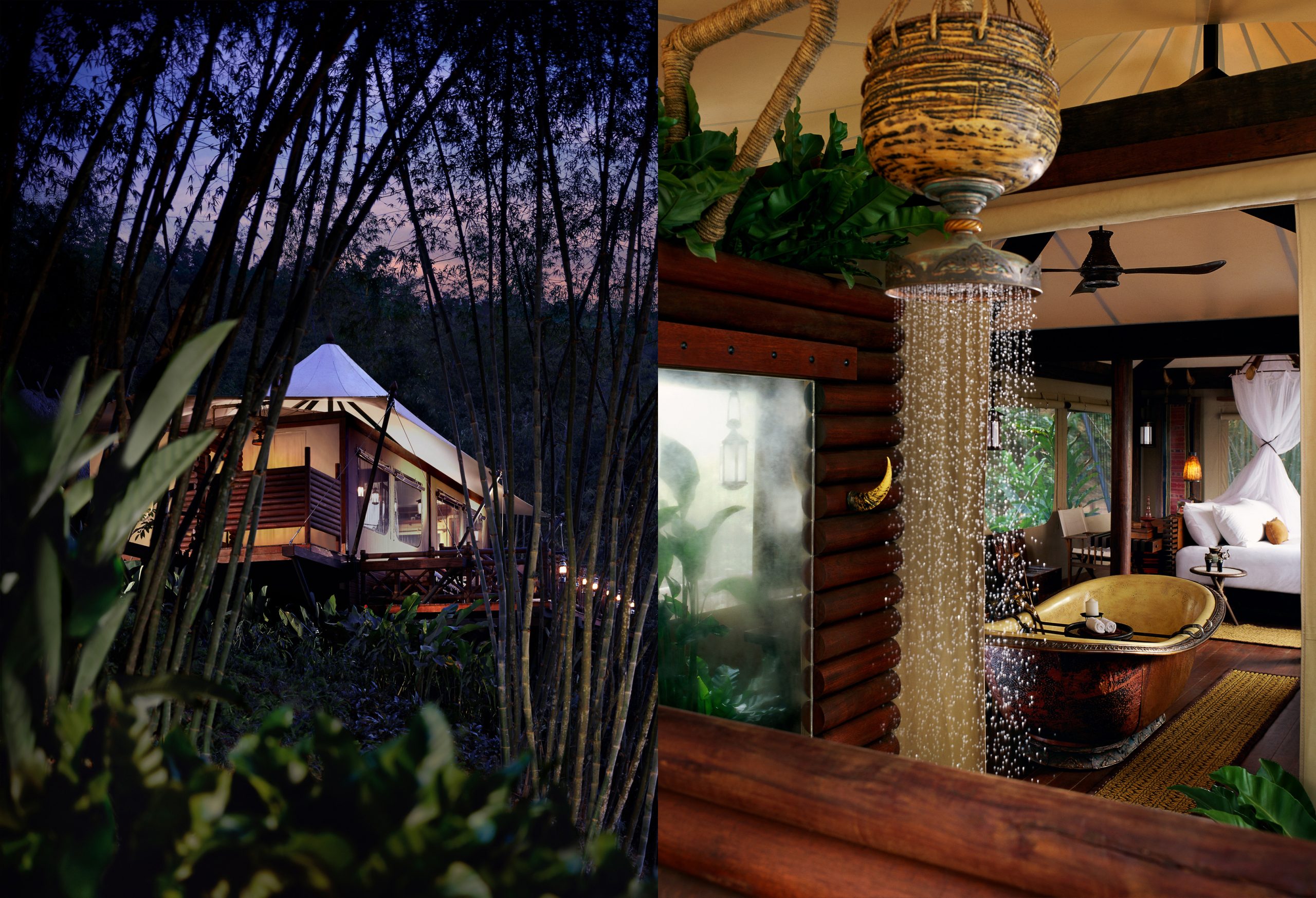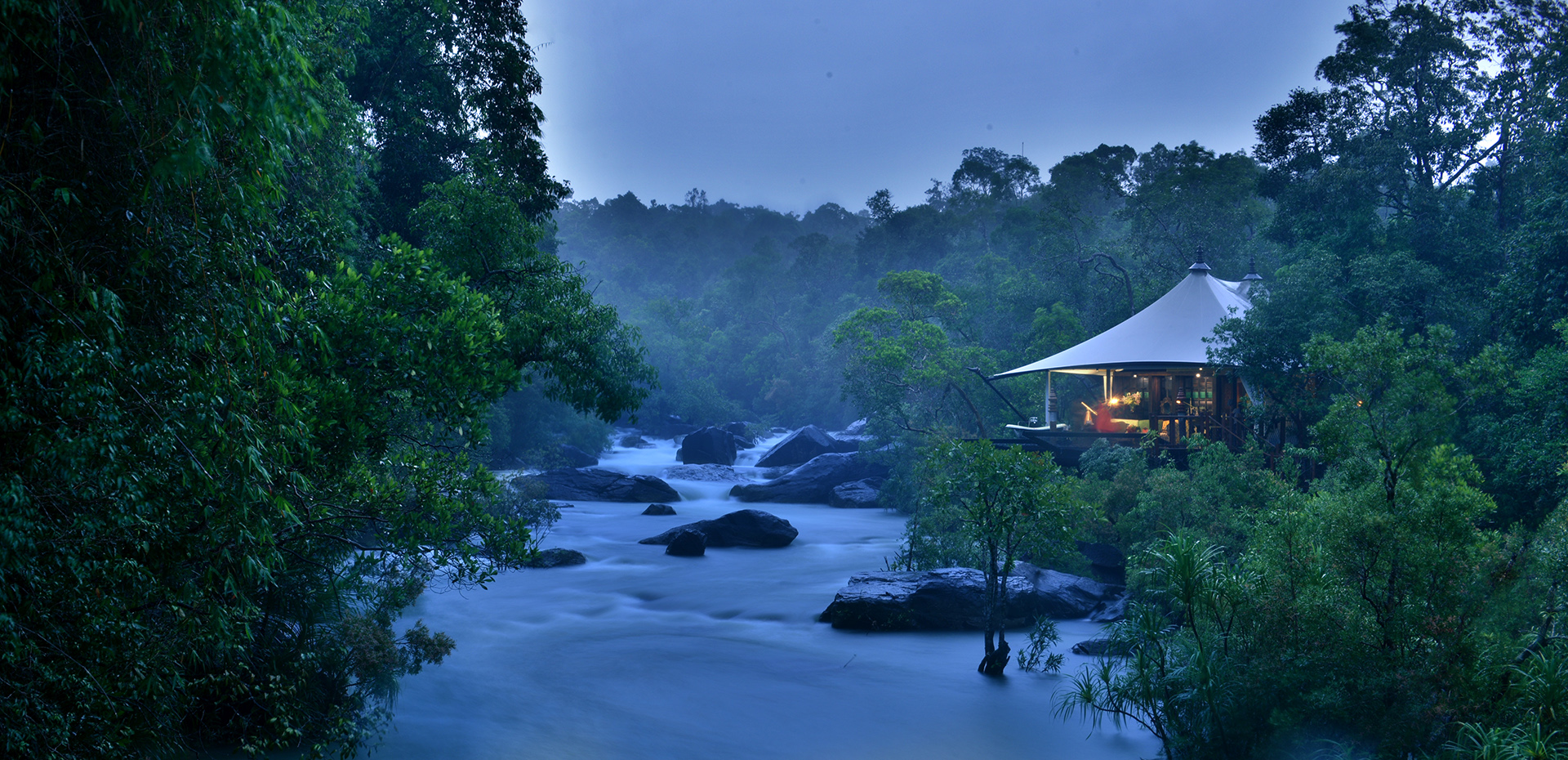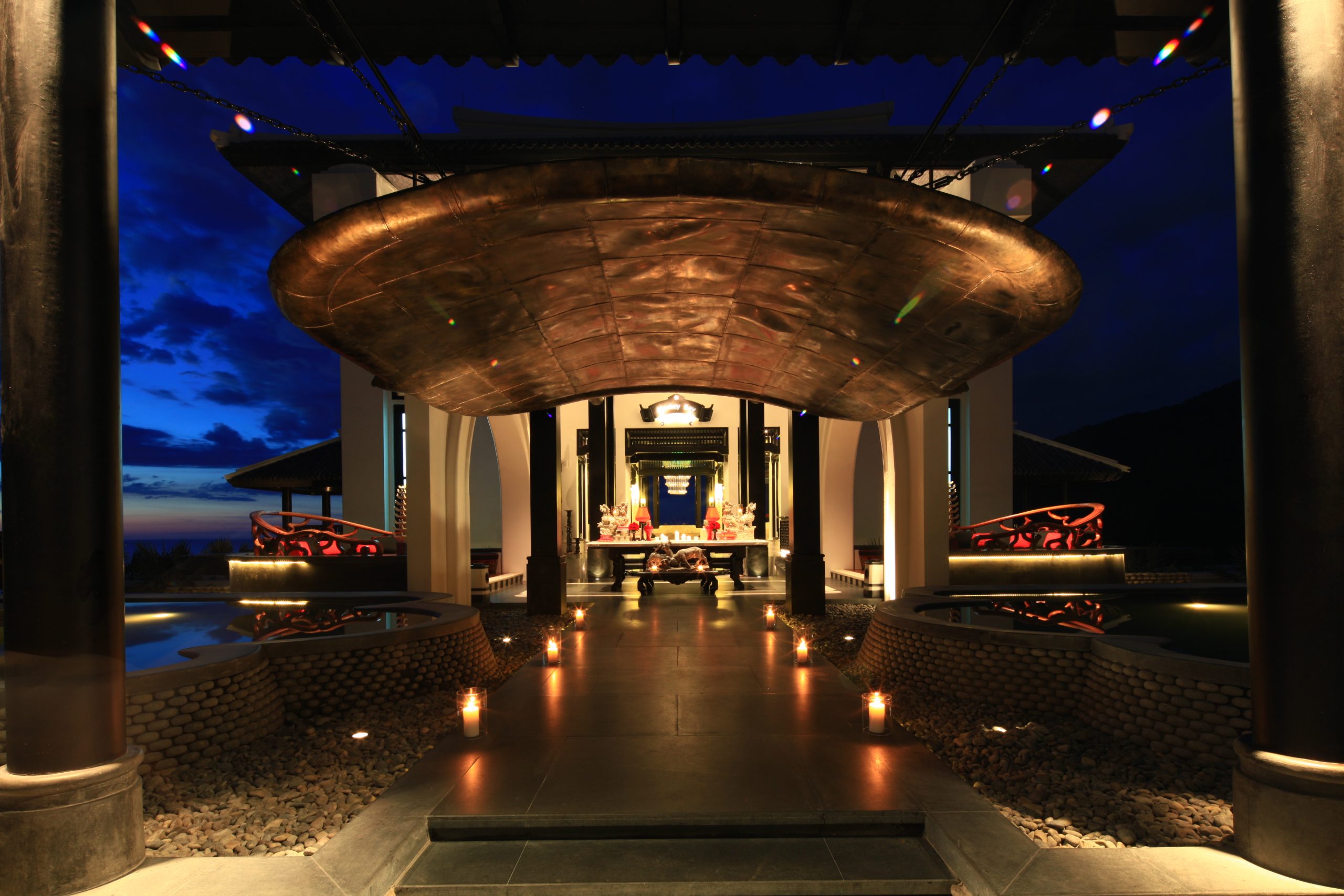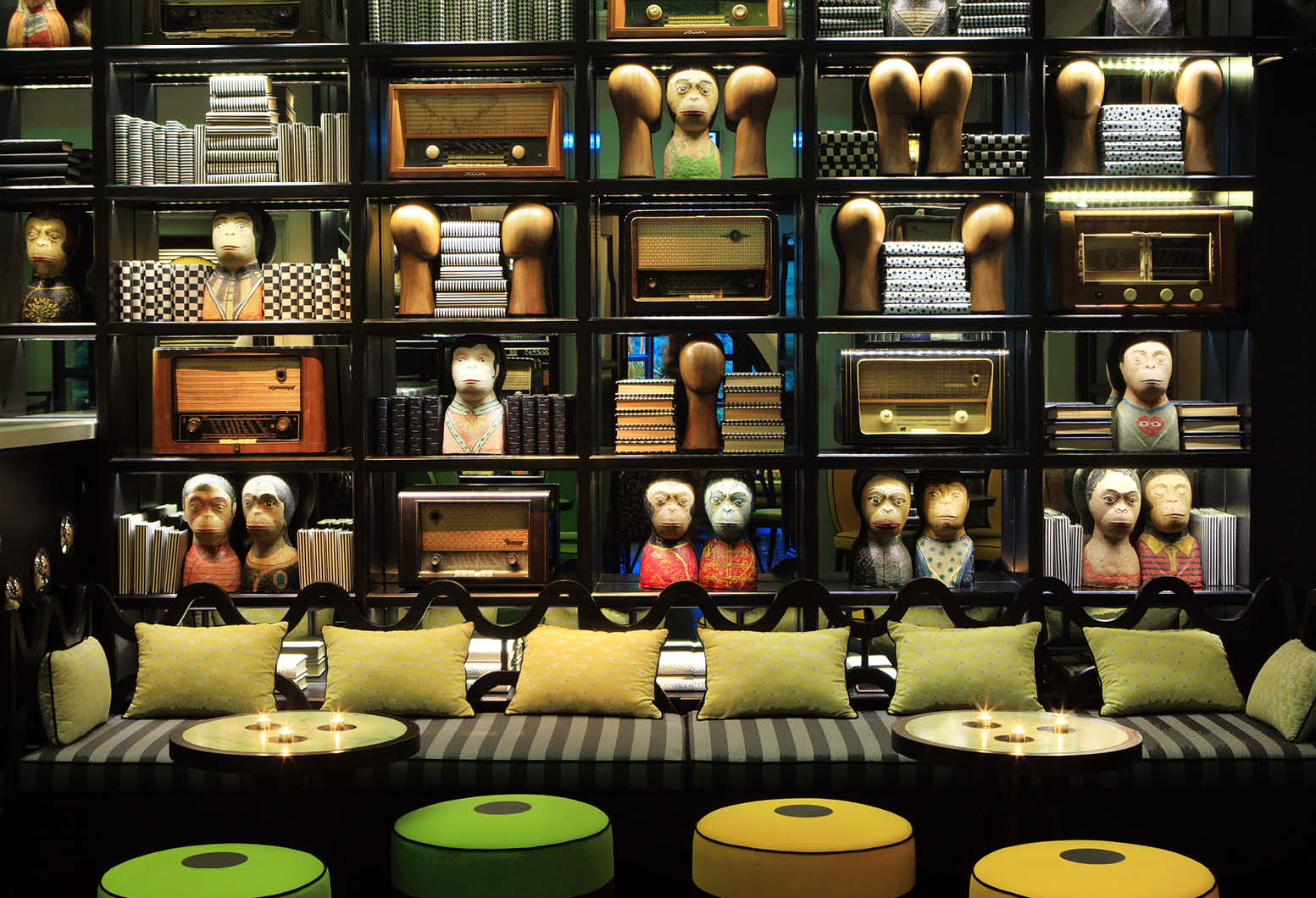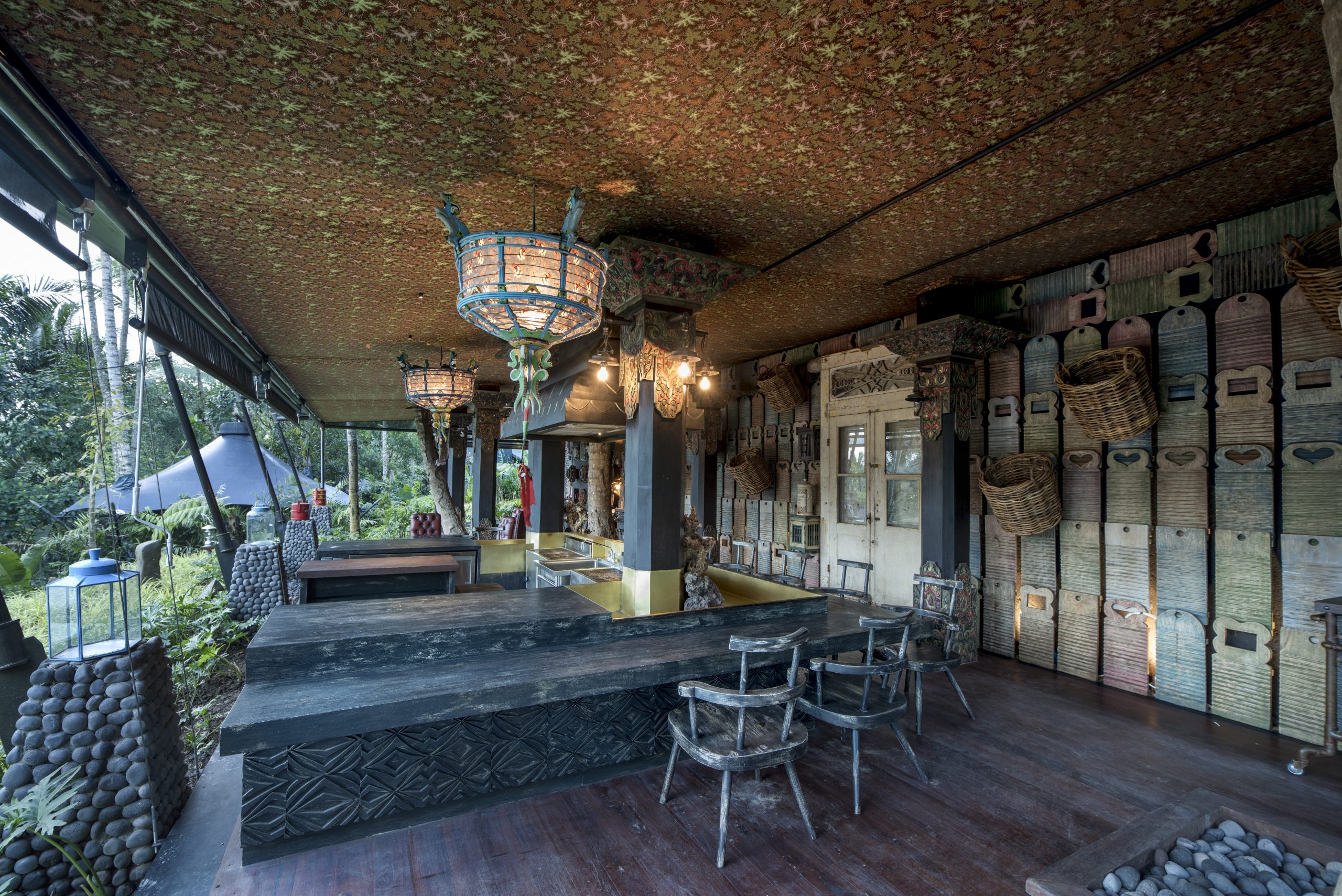Award-winning founder and creative director of design studio Bensley, Bangkok-based American architect and designer Bill Bensley is a world-renowned hotel designer who has partnered with global hospitality brands including Four Seasons, Capella, JW Marriott, and St Regis to create extraordinary hospitality experiences. Asia Designers Directory interviews Bill Bensley to find out more about his lustrous career.
BENSLEY is a brand name synonymous with extravagant hospitality experiences. What is your creative process and how do you impress and even surprise with designs overflowing with character and style?
We started as a small studio in a garage where everyone drew, sketched, painted, made models – a creative bunch where we weren’t limited by our job title. That remains today – it is a smart (DUMB) phone free zone, and all designers have to draw a still life in the office as part of their initial interview. Our best ideas begin with sketches, as we think through ideas out loud; these evolve into eponymous metre long scrolls of drawings, once done by hand and watercolor, and now using Photoshop, CAD and even 3D software – but always beginning by hand, and blending these mediums much as artists do. Rather than reworking our process to use technology, we kept our way of doing things, simply slotting in technology where it could help us. We impress, I think, because we try never to repeat ourselves and put our clients first and foremost: everyone wants a fresh, uniquely personal design for their project! The keys, I maintain are a strong DNA, and a style that places mother nature on the top shelf, not to be compromised. I also believe that we should respect the lives of local people and their cultures, as like the world’s natural environments, they are disappearing before our eyes.
- Rosewood Luang Prabang, Laos
- Rosewood Luang Prabang, Laos
- Rosewood Luang Prabang, Laos
- Rosewood Luang Prabang, Laos
- caption
You have a larger-than-life personality. How do your designs reflect your personality or approach towards life?
Why thank you! I have 2 mottos in life. The first is “Lebih gila lebih baik” – which means the odder the better in Indonesian, where one of our two studios is. I am a living embodiment of that! And the second is Thai: “Mai mun mai tum”, translating to if it ain’t fun, don’t do it!
I have surrounded myself with passionate people who are the best in what they do, who teach me buckets, and along the way became my friends too. And every day, I get to go around the office talking to all these partners in design and figuring out what crazy thing we can do next – and call that work!
You have designed hotels in remote and unique locations, such as The Four Seasons Tented Camp Golden Triangle in a jungle in Thailand and Shinta Mani Wild in Cambodia. What are some challenges when working on off-the-beaten locations?
Chiang Rai was fairly tricky as it was our first tented camp, so there was a steep learning curve (and site!). However although it is in the jungle, it was still somewhat accessible by road or river – so not too bad. We did have to build a suspension bridge though!
Building Shinta Mani Wild was probably the hardest thing I have ever done, for a myriad of reasons, including that it is so much easier to spend someone else’s money than my own! However it is also the most rewarding, as I know we are doing the right thing there, combining hospitality, philanthropy and conservation. After buying the land at auction to save it from becoming a mine, I visited over 40 times in 5 years, till the planning was just right. We used the process of minimal Intervention so no trees were cut down. People from the nearest village built it using local materials, and methods – such as cooling Cambodian wooden floors, with small gaps to allow air flow from beneath – instilling pride. It was a tough build with many ups and downs, but now in the remote Cardamoms guests leave the everyday behind, and are given a role in conservation… that is where the magic happens.
- Four Seasons Tented Camp Chiang Rai, Thailand
- Four Seasons Tented Camp Chiang Rai, Thailand
- Four Seasons Tented Camp Chiang Rai, Thailand
- Shinta Mani Wild, Cambodia
- Shinta Mani Wild, Cambodia
Your projects cover many exotic spots in Southeast Asia and around the world. How do you introduce historical and cultural nuances to your designs?
For each project, we draw from the context to create our project “DNA.” At the InterContinental Danang we visited dozens of temples and palaces in Vietnam, learning the best of the local vernacular, then taking the best elements to create an ode to Vietnam with a modern twist. We are renovating the same hotel now and championing the endangered Red-Shanked Douc monkey which is native to the surrounding jungles. I devour books. For Rosewood Luang Prabang, our site was the erstwhile home of ambassador Auguste Pavie. As I researched him I found reprints of historical manuscripts from the 1866 Mekong Expedition, via local publisher White Lotus. In it were the stories of the 8 explorers on that very expedition, who would have met Pavie… those manuscripts became the heart of our design!
- InterContinental Danang, Vietnam
- InterContinental Danang, Vietnam
- InterContinental Danang, Vietnam
- InterContinental Danang, Vietnam
Conservation is also an important consideration in your designs. Can you share with us some projects that exude your signature opulent style, while keeping the natural environment unspoilt with minimal environment impact?
It is the key! Shinta Mani Wild is a perfect example. It was built without cutting down a single tree, and to build it we hired locals – many of them ex-poachers and loggers with no other options – who created these 15 luxury tents. For the interiors, the guiding DNA was the idea of being on safari with Jackie O and King Sihanouk, during her Cambodian travels of 1967… Jackie and King Sihanouk each have a tent dedicated to them, as well as a Conservationist’s tent, a National Geographic tent, King Jayavarman’s tent, as well as tents honouring the many inhabitants of the forest: butterflies, terrapins, birds, elephants, gibbons… Building materials were sourced locally to reduce ecological footprint, while much of the furniture was custom made in the region, or antique and up-cycled, selected to be unique to each tent’s character.
Another example is the very maximalist Capella Ubud, which was also built following the ethos of minimal intervention, and “low impact high yield”. We started off as the landscapers on the project, with the original plan architecturally being an enormous hulk of a hotel that would have obliterated the natural beauty of the site – a valley sacred to the Balinese. Being a lover of nature and a landscape architect by training, I persuaded our good client Suwito to swap the 120 room hotel for a 24 tent camp that tip toes ever so softly on the land. We changed hotel operators to a more luxurious brand – Capella – allowing us to raise the room rate, which is now the highest on the island. Capella Ubud was rated first in the world by Travel and Leisure… conservation doesn’t need to impact sales!
- Capella Ubud, Bali, Indonesia
- Capella Ubud, Bali, Indonesia
- Capella Ubud, Bali, Indonesia
- Capella Ubud, Bali, Indonesia
What are you working on at the moment?
Recycling on a mammoth scale. Here in Thailand, at Khao Yai in a national park we are upcycling very old decrepit train carriages into a fabulous camp of sorts managed by InterContinental. It is our biggest upcycling project yet! Guests will find no less than 1,680 sqm suites, repurposed from heritage train cars which we sourced all over Thailand, overgrown with tree roots and vegetation. Each one has been upcycled and converted with great care, and turned into a series of sumptuous guest rooms, a bar carriage and even a spa. This is coming in 2023…






